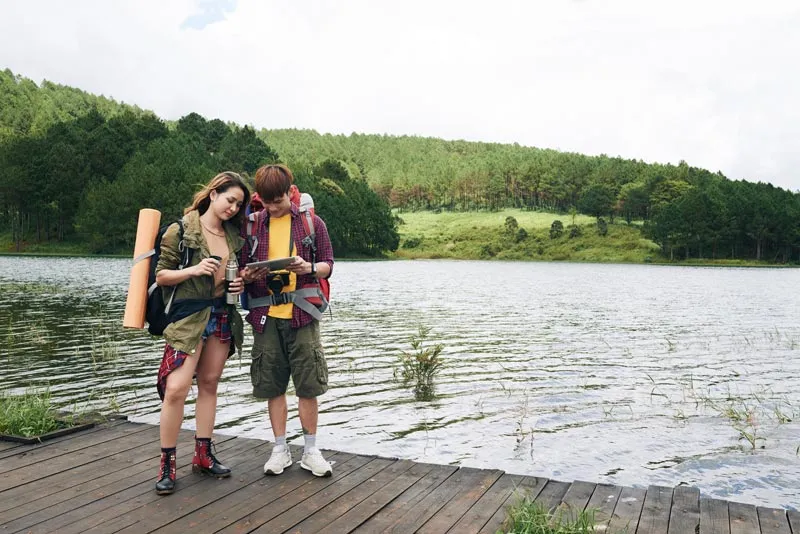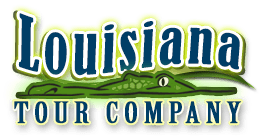How to Dress for a Swamp Tour (And What to Bring)

Planning a swamp tour in South Louisiana means stepping into one of the most unique environments in the country. Cypress forests, alligator sightings, birds overhead, and still bayou waters create a memorable setting—but the experience depends heavily on how well-prepared the guest is before stepping onto the boat. Weather, insects, water spray, and uneven terrain all play a role. Being underdressed or missing the essentials can quickly turn an exciting excursion into an uncomfortable one.
After running thousands of tours through Louisiana’s wetlands, there’s a clear pattern in what works and what doesn’t when it comes to dressing for a swamp tour and packing smart.
Dress for the Environment, Not the Weather Report
In Louisiana, weather can turn in an instant. A cool morning can shift into a hot, humid afternoon with a sudden pop-up rainstorm in between. Dressing for flexibility is more important than dressing for the conditions when leaving the house.
Start with lightweight, breathable clothing. Shirts and pants made from moisture-wicking material work best. These fabrics dry quickly if they get damp from humidity, rain, or water spray and allow airflow to keep the body cool. Cotton tends to trap moisture and stays wet longer, which adds to discomfort.
Long sleeves and long pants may seem counterintuitive in the heat, but they offer protection from the sun and insects. Loose-fitting clothing allows ventilation and creates a physical barrier against mosquitoes. Neutral colors—like beige, olive, and gray—work better than bright or dark shades, which attract insects and heat.
For footwear, closed-toe shoes are non-negotiable. Boat decks, wooden walkways, and muddy ground are all common during swamp tours. Footwear needs to provide grip, foot protection, and comfort. Waterproof hiking shoes or older sneakers that can handle moisture are preferred. Sandals and flip-flops offer no support and become slippery liabilities.
A wide-brimmed hat and sunglasses help with sun protection and glare from the water’s surface. Polarized lenses offer the added benefit of allowing better visibility into the water, making it easier to spot fish and alligators.
Bring Essentials to Stay Comfortable and Protected
Several key items belong in every swamp tour bag. These aren’t luxury items—they’re basic tools to stay focused on the scenery and not distracted by discomfort.
Start with insect repellent. Louisiana swamps are home to mosquitoes, gnats, and other biting insects. A repellent with DEET or picaridin is effective. Natural or plant-based alternatives can work but may need to be reapplied more often.
Sunscreen is important regardless of the forecast. Even on cloudy days, UV exposure in a reflective water environment can be high. A broad-spectrum sunscreen with an SPF of at least 30 helps prevent sunburn, especially during midday tours.
A reusable water bottle is useful for staying hydrated. The heat and humidity can lead to dehydration faster than expected. Most boats don’t provide water, so bringing it along is recommended.
A light rain jacket or poncho is another must-have. Rain in South Louisiana can show up unannounced. Packing a small, foldable waterproof layer means staying dry without having to cancel plans or retreat to shelter.
A waterproof bag or dry pouch helps protect valuables like phones, wallets, and cameras. Even if the boat has a covered canopy, water spray, sudden rain, or minor splashes are part of the environment.
For those interested in birdwatching or photography, binoculars or a camera with zoom enhance the experience. Many species keep their distance, so being able to observe or capture images from afar adds depth to the tour.
Finally, hand sanitizer or wipes are helpful for cleaning up before a snack or after touching public surfaces like railings and life jackets.
Optional Items to Consider
For individuals prone to motion sickness, even the smooth movement of a boat can trigger discomfort. Motion sickness medication taken in advance may help.
On longer tours, a snack such as a granola bar or pack of trail mix can be helpful. Some tours last up to two hours, and not all departure points offer food options nearby. Checking ahead about food policies is recommended.
In cooler months, layering becomes important. A fleece jacket or thermal shirt under a windbreaker may be necessary on early morning tours. The open water can create a wind chill that feels colder than expected.
Know the Tour Conditions Before Arriving
Tour durations typically range from 90 minutes to two hours. Boats may be open-air or partially covered. Seating varies, and restroom access may be limited, especially on airboat tours.
Swamp tours often begin at docks surrounded by muddy paths, wooden walkways, or gravel parking areas. Accessibility varies by tour type. Calling ahead ensures any mobility concerns can be addressed ahead of time.
Weather forecasts are helpful, but not always reliable. Preparing for a mix of sun, heat, wind, and rain ensures the focus stays on wildlife, not discomfort.
Final Thoughts
Swamp tours offer access to a side of Louisiana many never get to experience—wildlife habitats, cypress groves, and open water untouched by development. With the right clothing and a few simple items, the environment becomes an immersive adventure instead of a series of distractions.
Comfort, safety, and preparedness allow the focus to remain on the movement of the boat, the rustling of trees, and the unexpected appearance of wildlife just beyond the water’s edge.
